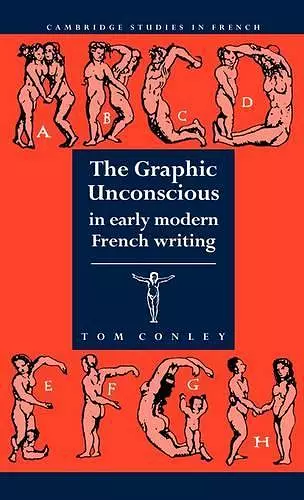The Graphic Unconscious in Early Modern French Writing
Understanding the interplay of typography and literature
Format:Hardback
Publisher:Cambridge University Press
Published:8th Oct '92
Currently unavailable, and unfortunately no date known when it will be back
This hardback is available in another edition too:
- Paperback£44.00(9780521032223)

This insightful work examines how typography influences meaning in French Renaissance literature, particularly in The Graphic Unconscious in Early Modern French Writing.
In The Graphic Unconscious in Early Modern French Writing, the author delves into the intricate relationship between typography and literature during the French Renaissance. This exploration highlights how typographic shapes play a crucial role in shaping meaning within the context of psychoanalysis and the evolution of printed writing. By examining significant literary works, such as the poetry of Clement Marot, Rabelais's 'Gargantua', Ronsard's sonnets, and Montaigne's 'Essais', the book reveals the complexities of how printed characters can enhance or obscure the intended message of the text.
The author, Professor Conley, argues that the graphic forms of these texts are not merely decorative but are essential for understanding the dynamics between verbal and visual elements in early print culture. By analyzing how Marot and Rabelais utilize typography to convey religious themes, how Ronsard merges various artistic forms, and how Montaigne reflects on the self in relation to print, the book uncovers the deeper implications of typography in literature. It suggests that these interactions are not always under the control of the author, indicating a more profound, unconscious influence at play.
Ultimately, The Graphic Unconscious in Early Modern French Writing offers a thought-provoking perspective on how early modern literature is intertwined with the visual aspects of print. It draws connections to contemporary media, suggesting that the historical relationship between graphic and verbal practices continues to resonate in modern contexts.
"...lively and provocative..." Virginia Quarterly Review
"[Conley] is very convincing. We are taken through a labyrinth of puns, amphibolies, alliterations, symmetries, inversions, analogies, and in a variety of tones. We are gradually won over, in spite of the difficulty of the text. Repetitive patterns and the author's insistence, backed by a solid method of demonstration, work. Moreover, this book is very well documented. Numerous notes reveal a mine of information embracing all points of view on the letter. Conley's historical and critical approaches to the subject bear witness to his scholarship." Danielle Raquidel, French Review
"...a unique and highly creative work, full of erudition, striking and persuasive interpretations, and daringly creative play with and through Renaissance texts. Many readers will be enthralled, some outraged, and none bored by Conley's willingness to follow the 'screen memories,'... Conley's willingness to take risks and his prodigious ability both to perceive the potential recombination of graphic material and to relate detail to large semantic units make The Graphic Unconscious a rewarding and refreshing book." John D. Lyons, Renaissance Quarterly
ISBN: 9780521410311
Dimensions: 216mm x 140mm x 17mm
Weight: 450g
240 pages